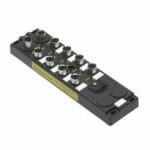The December issue of Applied Automation talks about proximity switches, PID tuning, and a case study on robotic technology helping a company that sells mowers.
The proximity switch is one of the oldest electronic components in automation. Introduced in 1958, it has been continually redesigned to accommodate the requirements of the evolving automation applications it serves. The cover story in this issue of AppliedAutomation talks about inductive proximity switch issues. In addition to offering selection and installation guidelines, it explains methods to reduce failures in new and retrofit applications. It also explores the effects of the application environment and reviews the importance of ingress protection and device construction.
This issue also includes an article about PID tuning—a topic frequently covered by AppliedAutomation,Control Engineering, and Plant Engineering. The author explains anecdotally how PID tuning affects a chemical tank level control process. The article offers PID tuning advice and explains how adjusting proportional, integral, and derivative parameters individually helps minimize loop tuning time—and aggravation. Changing one parameter or variable at a time helps to eliminate errors and save time. Also, hands-on experience can help accelerate the PID learning curve.
The third article explores how, in addition to business best practices, robotic technology helped Bad Boy Mowers in Batesville, Ark. get—and stay—on the fast track to meeting and maintaining its production and growth goals, and, in doing so, managed to keep its production in the U.S.—a point of pride for the company. Although the zero-point-turn mower market is very competitive, Bad Boy Mowers has doubled its production every year since 2002 when it began selling mowers. Early implementation of robotic welding cells helped the company establish rapid growth. Standardizing on those welding cells has helped Bad Boy Mowers maintain that growth.




